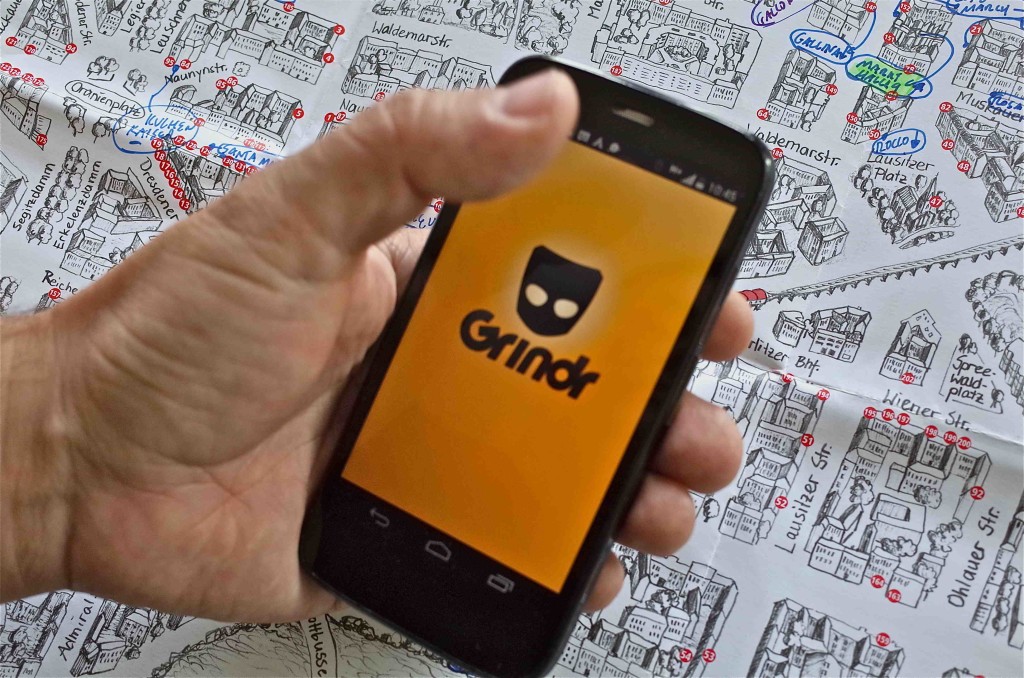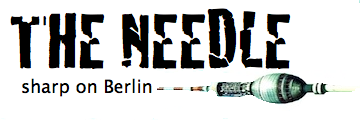Dumb or Malicious?: The Grindr Installation in Kreuzberg

The Dutch artist Dries Verhoeven’s pop-up action, ‘Wanna Play? Love in Times of Grindr’, has been brought to a close after only four days by popular protest, but in that short time plenty of damage has been done because it shared users’ private photos and chats with passer-bys in the street.
A slick transparent box was set up (planned for fifteen days) on a busy public square––Heinrichplatz, Kreuzberg––with the artist inside for all to see. There he chatted with nearby men using the gay cruising app Grindr and invited them to come inside for everyday activities like cooking together. The artist writes that his idea was to ‘expose the tragedies and opportunities of a phenomenon in gay culture: the sex date app’. This isn’t such a bad idea, on the surface of it, but it went terribly wrong here in the execution.
Grindr is in fact one of the most sex-driven of such mobile phone applications (compared, say, to Tindr, which is more for dating). It allows men, looking for sex, to know their distance from one another. They can share sex pics, and chat, typically directly, although confidentially, about how and when. Many men who use these apps are not themselves ‘out’, and operate on the assumption of mutually-assured destruction––that your interlocutor will not out you, because he also does not want others to know he is using Grindr.
‘Wanna play?’ removes this safeguard and brings your chats right out into the open. Remarkably (here’s the moment when you say, ‘What?!’) Verhoeven shared these ‘private’ conversations and photos by projecting them at street level for all to see, without the knowledge and specific consent of the men walking around the vicinity who contacted him. One must remember that many of the pictures shared on Grindr are hyper-sexual. Photos were projected in negative, but this hardly anonymised those using the application, and a number of the protesters could easily identify themselves.
In this way, the installation/’aktion’ violated privacy, entrapped gay men, and outed them in a public setting. If this isn’t irksome enough, the installation was located at the centre of Berlin’s immigrant community––where individuals face particular challenges, and have special reasons for remaining anonymous within a conservative sphere.
Just across the street is the club, SO36, which hosts the monthly Turkish/Arabic-German queer party, Gayhane. Anyone who has been there has noticed the prominent sign on the door which says ‘No pictures’. It’s there for a reason: to protect those who are threatened by homophobia within their own communities. This location has been what Germans call a ‘Brennpunkt’––a point of confrontation between ‘Turkish Nazis’ (I’m not sure I like the term, but this is what they’ve been called in the press and by people in the neighbourhood) waiting outside the club, often to police and attack members of their perceived ‘own community’ leaving the party. I remember very strongly the spontaneous and touching street demonstration that happened in 2008 in Heinrichplatz to protest such homophobic attacks.
Were Dries Verhoeven, and his sponsors at HAU (Hebbel am Ufer), aware of the history of the square where he put his trendy art project? Was he aware that he was outing people in a neighbourhood with arguably Berlin’s most vulnerable gay community?
If he was aware, then the project is malicious. If not, then the project is dumb.
I am willing to re-enter the arena to talk about the merits and demerits of the activist politics of outing. But somehow I don’t think the right route to show ‘gay people are everywhere’ is to confront a grandmother doing her shopping with her grandson asking an anonymous sex partner if he is active or passive. What’s so infuriating is that this project takes this basic assault on privacy and, on its blog, waxes about concepts such as ‘everything is public’ or ‘we are everywhere’, shrouding itself in theoretical self-justification, posing as social critique, and revelling in the trendy, but already dated, language of the early internet age.
Many individuals who were entrapped, and found their private conversations and photos projected to the square, may have been exposed to considerable risk. In addition one of the most sex-driven gay apps, Grindr, is hardly a pedagogical tool to help change homophobic attitudes in the community.
On Sunday, as in 2008, there was a spontaneous demonstration on Heinrichplatz which brought the installation to an end. HAU wrote that the reason was that ‘the project led to numerous complaints from the public’. Indeed. When you don’t give people a choice, and potentially put them in danger, it’s time to take your stupid art project and go home.
